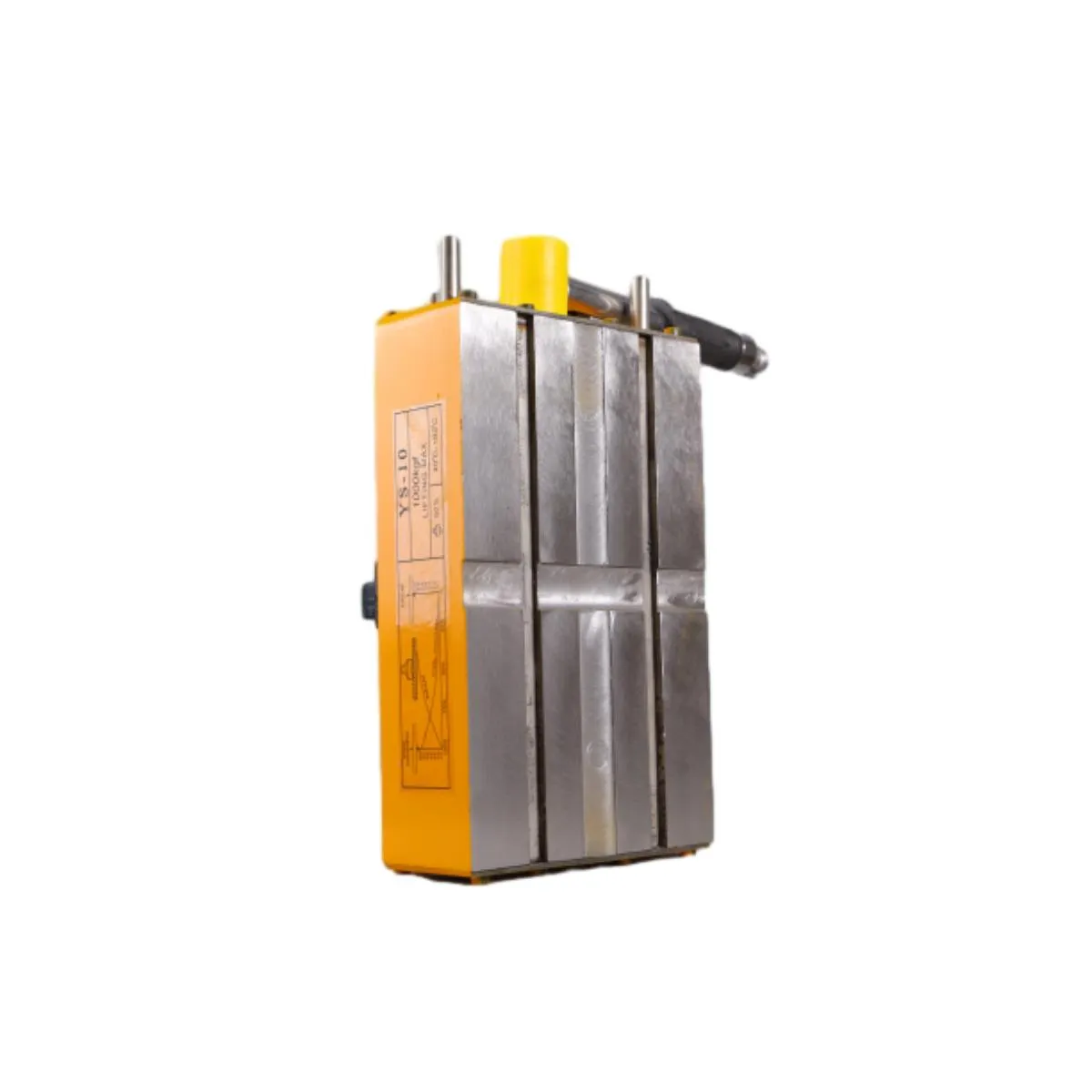magnetic lifter 1 ton
The Versatility and Efficiency of a 1-Ton Magnetic Lifter
In today’s fast-paced industrial world, the efficient handling of heavy loads is crucial for productivity and safety. Among the various tools and equipment available, the magnetic lifter has gained significant popularity, particularly the 1-ton variant. This device not only streamlines the process of lifting and moving ferrous materials but also enhances workplace safety and operational efficiency.
What is a Magnetic Lifter?
A magnetic lifter is a device that uses a strong magnet to lift and move ferrous (iron and steel) materials without the need for physical contact. The 1-ton magnetic lifter, as the name suggests, is capable of lifting up to 1 ton (approximately 2000 pounds) of weight. These lifters are constructed with a powerful permanent magnet that, when engaged, creates a magnetic attraction strong enough to hold heavy loads securely. When the lifter is deactivated, the load can be safely released.
Key Features of a 1-Ton Magnetic Lifter
1. Portability One of the standout features of a 1-ton magnetic lifter is its portability. These devices are typically compact and lightweight, making them easy to transport and operate in various settings, from warehouses to construction sites.
2. Ease of Use Magnetic lifters are designed for simplicity. They often come with a simple handle or lever that activates the magnetic force, allowing operators to lift and move heavy materials with minimal effort. This user-friendly design reduces training time and increases operational efficiency.
3. Safety Workplace safety is a top priority in any industrial environment. The 1-ton magnetic lifter is engineered to ensure secure lifting. With no moving parts to wear out, the risk of malfunction is greatly reduced compared to traditional lifting methods. Additionally, many lifters come with built-in safety features, such as a safety lock system, which prevents unintentional release of the load.
4. Cost-Effectiveness Investing in a magnetic lifter can lead to significant cost savings over time. The durability and low maintenance requirements of these devices mean that companies can reduce their operational costs associated with labor, equipment repairs, and equipment rentals.
magnetic lifter 1 ton

Applications of a 1-Ton Magnetic Lifter
The versatility of a 1-ton magnetic lifter makes it suitable for a wide range of applications. Here are a few common uses
1. Manufacturing In manufacturing plants, magnetic lifters are used to move steel plates, large metal components, and assemblies. This not only speeds up the manufacturing process but also minimizes the risk of damage to products during handling.
2. Construction In the construction industry, magnetic lifters can be employed to lift heavy metal beams, columns, and panels. Their ease of use and quick activation mean that workers can position materials with greater speed and accuracy.
3. Warehousing In warehouse environments, magnetic lifters can simplify the process of loading and unloading heavy materials from trucks or pallets. This reduces labor costs and enhances efficiency in inventory management.
4. Recycling Magnetic lifters play a crucial role in recycling operations by easily moving ferrous scrap metal, significantly improving the sorting and processing efficiency of recyclable materials.
Conclusion
The 1-ton magnetic lifter stands out as a revolutionary tool in material handling across various industries. Its unique design combines strength, safety, and ease of use, making it an invaluable asset for businesses seeking to enhance their operational efficiency. By reducing the physical strain on workers and providing a reliable way to lift and maneuver heavy loads, magnetic lifters contribute to a safer and more productive work environment. As industries continue to evolve, the need for innovative lifting solutions like the 1-ton magnetic lifter will only grow, making it a smart choice for modern businesses looking to thrive in a competitive market. Whether in manufacturing, construction, warehousing, or recycling, the magnetic lifter proves to be an essential piece of equipment that can transform how materials are handled in the workplace.
-
Unlock Seamless Relocation with Our Heavy Equipment Moving ExpertiseNewsJun.06,2025
-
Unleash Unrivaled Flexibility with Our Adjustable Gantry CraneNewsJun.06,2025
-
Unleash Heavy-Duty Efficiency with Our Industrial Gantry Crane SolutionsNewsJun.06,2025
-
Revolutionize Steel Handling with Our Magnetic Lifter RangeNewsJun.06,2025
-
Master Equipment Mobility with Premium Machinery Mover SolutionsNewsJun.06,2025
-
Elevate Your Material Handling with Magnetic Lifter TechnologyNewsJun.06,2025
-
YS Permanent Lifting Magnets: The Smarter Way to Handle SteelNewsMay.22,2025
